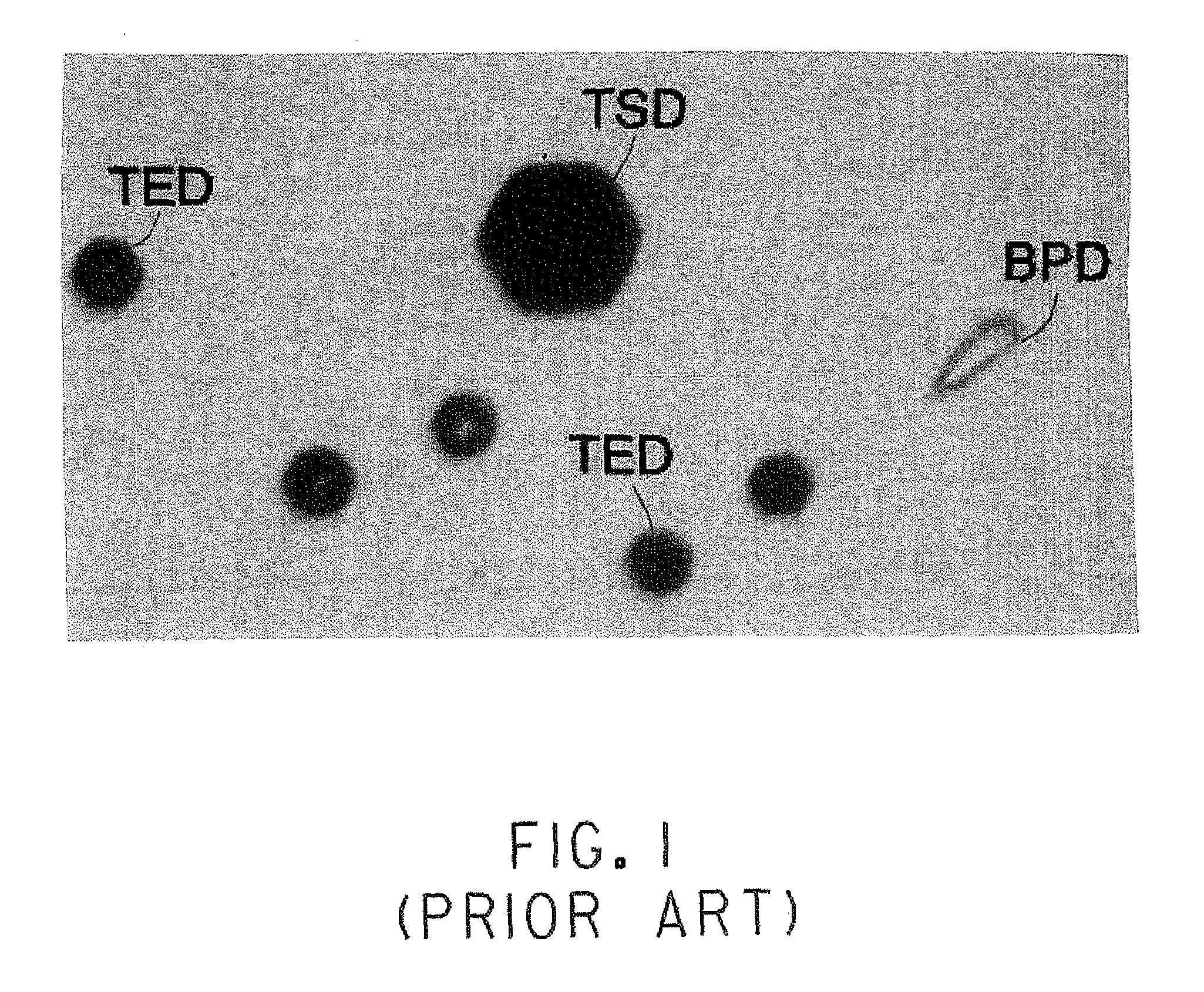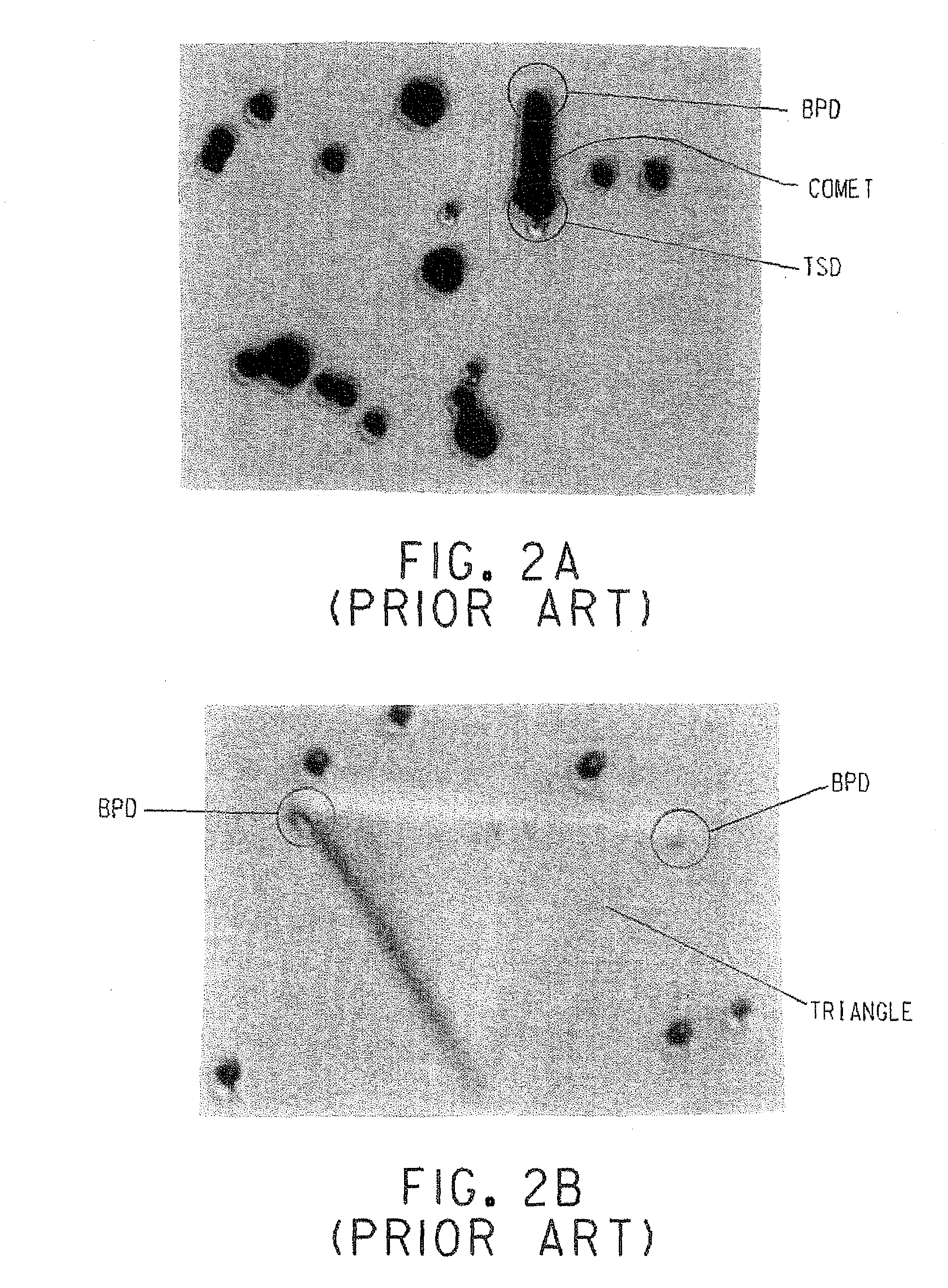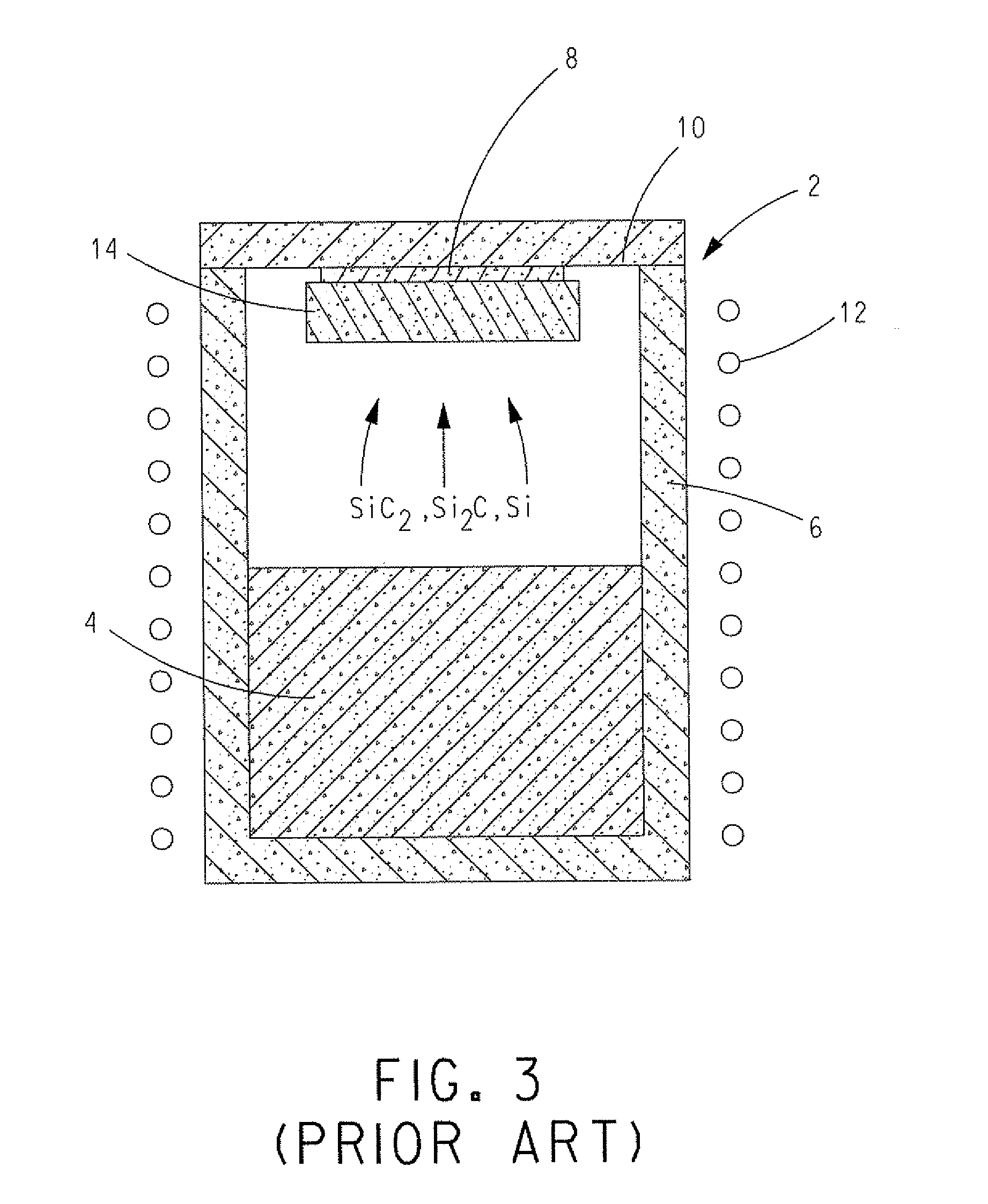Sic single crystals with reduced dislocation density grown by step-wise periodic perturbation technique
a technology of periodic perturbation and single crystals, which is applied in the direction of single crystal growth, polycrystalline material growth, chemistry apparatus and processes, etc., can solve the problems of difficult to clearly separate different types of dislocations through molten koh etching methods on these kinds of samples, and the shape of etch pits in heavily nitrogen-doped n+sic substrates is usually not well defined, so as to improve the purity of growth components, reduce the generation of dislocation
- Summary
- Abstract
- Description
- Claims
- Application Information
AI Technical Summary
Benefits of technology
Problems solved by technology
Method used
Image
Examples
Embodiment Construction
[0040]The following detailed description will be made with reference to the accompanying figures where like reference numbers correspond to like elements.
[0041]It has been observed, that sharp perturbations of the SiC single crystal growth process can result in a noticeable reduction in the density of threading dislocations. One desirable way to induce such perturbation is by step-wise doping during growth.
[0042]Step-wise doping creates conditions where adjacent layers of the crystal grown in sequence have slightly different lattice parameters. As a result, a lateral stress component is created which forces each threading dislocation to change the direction of its line in order to avoid or eliminate this stress. Desirably, the direction of each dislocation line changes by 90 degrees, i.e., the dislocation from threading becomes basal. Accordingly, the probability for the dislocation to intersect an opposite sign dislocation located nearby increases. In addition, basal plane dislocat...
PUM
 Login to View More
Login to View More Abstract
Description
Claims
Application Information
 Login to View More
Login to View More - R&D
- Intellectual Property
- Life Sciences
- Materials
- Tech Scout
- Unparalleled Data Quality
- Higher Quality Content
- 60% Fewer Hallucinations
Browse by: Latest US Patents, China's latest patents, Technical Efficacy Thesaurus, Application Domain, Technology Topic, Popular Technical Reports.
© 2025 PatSnap. All rights reserved.Legal|Privacy policy|Modern Slavery Act Transparency Statement|Sitemap|About US| Contact US: help@patsnap.com



